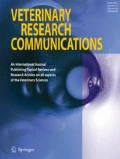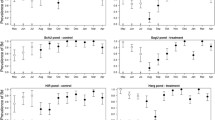Abstract
Chytridiomycosis caused by the pathogen Batrachochytrium dendrobatidis is an important cause of amphibian declines globally, and is the worst pathogen on record for causing biodiversity loss. The critically endangered southern corroboree frog, Pseudophryne corroboree, is functionally extinct in the wild and is surviving in captive assurance colonies. These captive colonies must remain disease free, and there is no known treatment for corroboree frogs with terminal chytridiomycosis. In this study we tested two triazole antifungals (itraconazole and voriconazole) coupled with aggressive electrolyte therapy on moribund corroboree frogs with severe chytridiomycosis. Six moribund frogs were given 20 mL baths of 0.5 μg/mL itraconazole for 5 min/day for 5 days coupled with electrolyte injections every 8 h for 3 days followed by every 12 h for 3 days. Six other moribund frogs were given 1 mL drops of 1.25 μg/mL voriconazole daily for 7 days coupled with the aggressive electrolyte therapy. While only one animal survived this treatment regime, time until death was extended for all animals by at least 3 days and infection load decreased by an average of 89.3 %. Our results suggest there is potential for recovery of terminally ill P. corroboree, and we suggest further trials include antibiotics as well as exploring variations on the above treatment regime with other antifungals.



Similar content being viewed by others
References
Baitchman EJ, Pessier AP (2013) Pathogenesis, diagnosis, and treatment of amphibian chytridiomycosis. Vet Clin N Am Exot Anim Pract 16:669–685. doi:10.1016/j.cvex.2013.05.009
Berger L, Speare R, Skerratt LF (2005) Distribution of Batrachochytrium dendrobatidis and pathology in the skin of green tree frogs Litoria caerulea with severe chytridiomycosis. Dis Aquat Org 68:65–70. doi:10.3354/dao068065
Berger L, Speare R, Pessier A et al (2010) Treatment of chytridiomycosis requires urgent clinical trials. Dis Aquat Org 92:165–174. doi:10.3354/dao02238
Bishop PJ, Speare R, Poulter R et al (2009) Elimination of the amphibian chytrid fungus Batrachochytrium dendrobatidis by Archey’s frog Leiopelma archeyi. Dis Aquat Org 84:9–15. doi:10.3354/dao02028
Boyle DG, Boyle DB, Olsen V et al (2004) Rapid quantitative detection of chytridiomycosis (Batrachochytrium dendrobatidis) in amphibian samples using real-time Taqman PCR assay. Dis Aquat Org 60:141–148. doi:10.3354/dao060141
Brannelly LA, Richards-Zawacki CL, Pessier AP (2012) Clinical trials with itraconazole as a treatment for chytrid fungal infections in amphibians. Dis Aquat Org 101:95–104. doi:10.3354/dao02521
Brannelly L, Berger L, Marantelli G, Skerratt LF (2015) Low humidity is a failed treatment option for chytridiomycosis in the critically endangered southern corroboree frog. Wildl Res 42:44–49. doi:10.1071/WR14097
Carver S, Bell BD, Waldman B (2010) Does chytridiomycosis disrupt amphibian skin function? Copeia 2010:487–495. doi:10.1643/CH-09-128
Garner TWJ, Garcia G, Carroll B, Fisher MC (2009) Using itraconazole to clear Batrachochytrium dendrobatidis infection, and subsequent depigmentation of Alytes muletensis tadpoles. Dis Aquat Org 83:257–260. doi:10.3354/dao02008
Georoff TA, Moore RP, Rodriguez C et al (2013) Efficacy of treatment and long-term follow-up of Batrachochytrium dendrobatidis PCR-positive anurans following itraconazole bath treatment. J Zoo Wildl Med 44:395–403. doi:10.1638/2012-0219R.1
Holden WM, Ebert AR, Canning PF, Rollins-Smith LA (2014) Evaluation of amphotericin B and chloramphenicol as alternative drugs for treatment of chytridiomycosis and their impacts on innate skin defenses. Appl Environ Microbiol 80:4034–4041. doi:10.1128/AEM.04171-13
Hunter D, Pietsch R, Marantelli G, et al (2009) Field research, recovery actions and recommendations for the Southern Corroboree Frog (Pseudophryne corroboree) recovery program: 2007–2009
Hunter DA, Marantelli G, McFadden M, Harlow P, Scheele B, Pietsch R (2010) Assessment of re-introduction methods for the southern corroboree frog in the Snowy Mountains region of Australia. In: Soorae P (ed) Global re-introduction perspectives: additional case-studies from around the globe. IUCN/SSC Reintroduction Specialist Group, Abu Dhabi, p 72–76
Jones MEB, Paddock D, Bender L, Allen JL, Schrenzel MD, Pessier AP (2012) Treatment of chytridiomycosis with reduced-dose itraconazole. Dis Aquat Org 99:243–249
Martel A, Van Rooij P, Vercauteren G et al (2011) Developing a safe antifungal treatment protocol to eliminate Batrachochytrium dendrobatidis from amphibians. Med Mycol 49:143–149. doi:10.3109/13693786.2010.508185
Page SW (1991) Chloramphenicol 1. Hazards of use and the current regulatory environment. Aust Vet J 68:1–2. doi:10.1111/j.1751-0813.1991.tb09826.x
Pessier AP, Mendelson J (2010) A manual for control of infectious diseases in amphibian survival assurance colonies and reintroduction programs. IUCN/SSC Conservation Breeding Specialist Group, Apple Valley
Skerratt LF, Berger L, Speare R et al (2007) Spread of chytridiomycosis has caused the rapid global decline and extinction of frogs. Ecohealth 4:125–134. doi:10.1007/s10393-007-0093-5
Skerratt LF, Mendez D, Mcdonald KR et al (2011) Validation of diagnostic tests in wildlife: the case of chytridiomycosis in wild amphibians. J Herpetol 45:444–450. doi:10.1670/10-193.1
Stuart SN, Chanson JS, Cox NA et al (2004) Status and trends of amphibian declines and extinctions worldwide. Science 306:1783–1786. doi:10.1126/science.1103538
Voyles J, Young S, Berger L et al (2009) Pathogenesis of chytridiomycosis, a cause of catastrophic amphibian declines. Science 326:582–585. doi:10.1126/science.1176765
Young S, Speare R, Berger L, Skerratt LF (2012) Chloramphenicol with fluid and electrolyte therapy cures terminally ill green tree frogs (Litoria caerulea) with chytridiomycosis. J Zoo Wildl Med 43:330–337. doi:10.1638/2011-0231.1
Acknowledgments
We would like to thank J. Hawkes, K. Fossen and C. De Jong for help with animal husbandry, R. Webb for histological preparation, S. Bell for qPCR analysis, S. Cashins and P. Harlow for information on previous treatments used on the species, and G. Marantelli for providing the animals. We would like to give a special thanks to our veterinary pathologists, M. Forzan and L. Johnson, for help with pathology. We thank the Australian Research Council for funding this study.
Funding
The study was funded by the Australian Research Council grant LP110200240.
Conflict of interest
The authors declare they have no conflicts of interest in the research undertaken for this study.
Ethical approval
All applicable international, national, and/or institutional guidelines for the care and use of animals were followed. All procedures performed in studies involving animals were in accordance with the ethical standards of James Cook University Animal Ethics Council, and the study was conducted under ethics application A1875 entitled “innate and adaptive immune mechanisms against amphibian chytrid fungus and non-chemotherapeutic treatment methods.”
Author information
Authors and Affiliations
Corresponding author
Rights and permissions
About this article
Cite this article
Brannelly, L.A., Skerratt, L.F. & Berger, L. Treatment trial of clinically ill corroboree frogs with chytridiomycosis with two triazole antifungals and electrolyte therapy. Vet Res Commun 39, 179–187 (2015). https://doi.org/10.1007/s11259-015-9642-5
Received:
Accepted:
Published:
Issue Date:
DOI: https://doi.org/10.1007/s11259-015-9642-5




